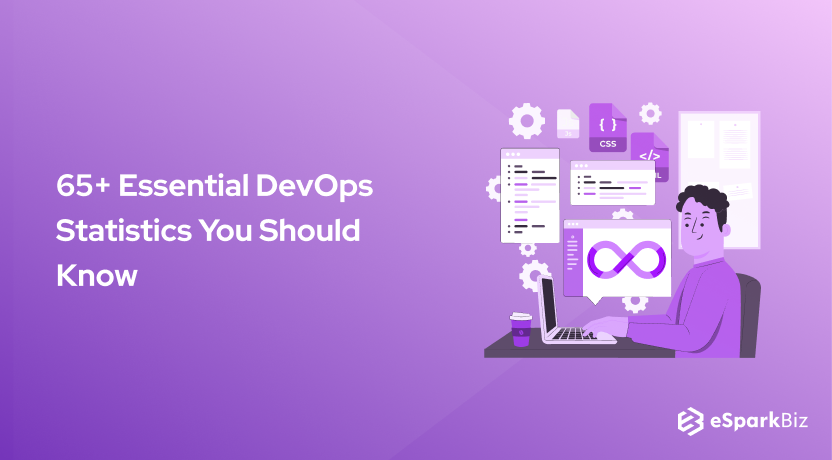Did you know that global spending on public cloud services is likely to reach USD 1.35 trillion by 2027? Yes, you read it right! While there are several players in the cloud market, Amazon Web Services (AWS) occupies a dominant position with a market share of 31% in the first quarter of the year 2024.

AWS is a leading cloud computing platform offering an extensive range of services, including storage, computing, networking, container orchestration, and more. No doubt, it provides ample benefits to modern organizations. However, managing and controlling cloud costs is often a challenge for companies.
Therefore, having an idea about the AWS cost optimization best practices matters a lot. Cost optimization in AWS is all about analyzing and monitoring your usage, identifying opportunities to cloud cost optimization, and implementing appropriate actions. The core aim is to fine-tune your spending and ensure more budget is available for areas that can drive innovation and growth.
In this article, you will delve into the best practices of AWS cost optimization. Let’s dive in!
What is AWS Cost Optimization?
AWS cost optimization refers to the process of making adjustments to your AWS usage and ensuring that you only pay for the resources you need. It is all about striking a perfect balance between cost and performance. The ultimate goal is to eliminate waste and make the most of cost-saving features.
Cost optimization in AWS involves analyzing the current AWS Consulting services, understanding the use pattern, and identifying potential areas where expenses can be minimized without affecting business operations. It can enable you to direct your financial resources into areas that will provide greater returns on investment.
Need for AWS Cost Optimization
Are you still wondering why cost optimization in AWS matters for your organization? Delve into the top reasons!
Minimize Unnecessary Expenditure
When operating in the cloud, it is quite common for businesses to end up paying for services that aren’t utilized fully. It may include the storage allocated yet not used or instances running idle. Cost optimization allows you to perform a thorough review of the AWS resources, pinpoint the underperforming or unnecessary assets, and avoid spending on such resources.
Limit Resource Over-Provisioning
In recent times, a lot of businesses leverage the ‘better safe than sorry’ approach. However, it can often result in inflated costs and may not provide you with the desired outcomes. Therefore, it is essential to ensure perfect alignment between provisioning and actual alignment. As a result, eliminating waste and contributing to a more agile cloud infrastructure becomes easy.
Improve Budget Allocation
AWS cost optimization can ensure more predictable cloud spending. It can offer greater financial clarity and enable organizations to reallocate funds to areas that help drive innovation or generate more revenue. Moreover, by leveraging the AWS budgeting tools, you can forecast future expenditures and avoid budget overruns effectively.
Streamline Operational Efficiency
Efficiency in the cloud isn’t all about cost management; it also involves the optimization of the performance of different resources to deliver Cloud Services and Solutions effectively. Focusing on AWS cost optimization can help minimize waste, enhance operational efficiency, and meet the unique needs of your business.
Increase Agility
Cost optimization in AWS can free up resources and allow you to scale applications in a cost-effective manner. With more resources, your business can finance a greater number of projects and serve the unique needs of the customers. Moreover, it can even help make more resources available to the existing applications and ensure better performance.
Best Practices of AWS Cost Optimization
By now, you must have an idea of the need for AWS cost optimization. Are you wondering how to get started? In that case, having an idea of the AWS cost optimization best practices matters a lot. Read on to explore everything in detail!
Turn Off Unused or Idle Instances
Organizations make use of instances as per their highest peak of requirement. However, it isn’t constant all the time. As a result, there is a high chance that organizations may required to pay even for the unused resources, contributing to higher costs.
Therefore, turning off the unused instances is an ideal way to optimize cloud spend. Are you wondering how to shut down the unused instances? Well, you can easily find multiple ways to achieve it.
Shut down your test and development instances in the evening and during the weekends when they are no longer in use. It can help save nearly 65 percent or even more of your cloud spend. Auto-scale your production instances to meet your unique demand. Moreover, consider terminating the demos, development, and training instances as the projects are completed.
Select the Right AWS Region
When it comes to AWS cost optimization best practices, the choice of AWS region matters a lot. Choosing the right AWS region can ensure better cost efficiency, compliance of operations, and greater performance. To make use of the AWS Management Console, SDK, or CLI, selecting a region is crucial.
While most users make this decision based on distance, the selected AWS region has the potential to impact latency, availability, and costs. Therefore, the choice of AWS region will depend on several factors. It includes:
- Latency: Regions with smaller latency can make applications easily accessible to a specific group of users.
- Costs: The pricing of each AWS region differs. Therefore, it is wise to leverage a cost calculator and estimate the costs accurately while using the different regions.
- Availability: Making use of multiple AWS regions can enhance availability and allow you to create separate disaster recovery sites.
- Service Availability: It is no surprise that not all AWS services are available to all regions. Therefore, before finalizing a particular region, it is essential to ensure that the target AWS service is available in that region.
Implement Auto-Scaling Policies
Leveraging auto-scaling policies is indeed a smart way to make adjustments to the compute resources to cater to the workload demands while optimizing costs. Auto-scaling can enable you to scale up resources when there is a high demand. On the other hand, you can scale down resources during lulls and save more on costs.
AWS provides users with auto-scaling services that can adjust the number of ECS tasks, EC2 instances, RDS instances, and DynamoDB throughput. The adjustments are done on the basis of custom schedules, scaling policies, and health checks. By perfectly aligning resource capacity with demand, auto-scaling can optimize costs and enhance Cloud Application Development performance and availability.
Identify and Downsize Instances with Low Utilization
Spending on the under-utilized instances can increase your cloud costs significantly. Therefore, downsizing them can help lower your overall costs. Leverage the AWS Cost Explorer Resource Optimization tool to avail of a report of whether the EC2 instances have low utilization or are idle.
Downsizing or completely stopping such instances can help lower costs effectively. Moreover, you can also make use of the Amazon Instance Scheduler to stop instances automatically when they are no longer required.
Reduce Data Transfer Costs
Data transfer from different AWS resources like S3 and EC2 to the public internet can result in significant expenses. If you want to minimize such costs, the good news is that there are plenty of ways available.
One of the best ways of ensuring data transfer cost optimization is to access data from Amazon S3 within the same region. It is completely free of charge. However, accessing Amazon S3 from different can incur a cost.
Try to avoid the use of public IP addresses for internal communication within the same availability zone. Instead, opting for a private IP address can help ensure free data transfer. Moreover, if you have to make a lot of downloads from the servers, leveraging CloudFront, an AWS content delivery network, is an ideal decision.
Leverage Discounted Instances
When it comes to AWS cost optimization best practices, you cannot forget the discounted instances. To optimize the costs effectively, you must have an idea of the different discount options of Amazon instances.
With AWS Reserved Instances, you can avail of lucrative discounts for making commitments ranging from one to three years. The longer your commitment, the greater will be your discount. However, the discounts can range between 24 to 75 percent based on the instance type, region, and the RI term.
AWS Elemental MediaConvert and Amazon CloudFront can also offer you unique discounts on making minimum usage commitments.
Leverage Compute Saving Plans
Compute Savings Plans is all about a commitment-based pricing model that can enable you to enjoy substantial savings. It can enable you to save up to 66 percent in comparison to the On-Demand instance pricing model. All you have to do is commit to a consistent amount of compute usage for a period of one to three years. It can significantly lower your costs across different compute services.
The best thing about these plans is that they offer flexibility by making the usage applicable to any EC2 instance, irrespective of instance family, tenancy, region, or operating system. This AWS cost optimization practice is especially beneficial for organizations with predictable workloads. In addition to cost savings, this approach allows businesses to easily shift usage across different compute options without making any changes to the discount structure.
Also Read : Understanding the SaaS Pricing Models
Audit Underutilized EBS
Underutilized Elastic Block Store (EBS) often goes unnoticed and contributes to the increase in expenses of organizations. Over-provisioned EBS volumes can accrue charges even if they are not contributing to the workload. Therefore, auditing them regularly can help determine and eliminate storage waste and minimize costs significantly.
You can make use of different third-party cloud monitoring tools or AWS tools to identify the underutilized volumes through the analysis of usage patterns. As a result, it becomes easy for businesses to opt for more cost-effective storage options. Regular audits can enable you to right-size the storage infrastructure and ensure that you only pay for the storage you use and require. It can significantly contribute to reduced AWS spending.
Implement Elastic Load Balancing
Elastic Load Balance or ELB is crucial for the distribution of incoming traffic across different targets, including Amazon EC2 instances, IP addresses, and containers. It can provide you with the assurance that no single resource will become a bottleneck, thereby leading to the optimization of resource use and performance. By routing client requests to the resources that are less busy, ELB can help enhance response time and maintain application fault tolerance.
Moreover, the AWS integration Services for ELB with auto-scaling policies can improve resource utilization even more. It can adjust the fleet of servers as per the incoming traffic volume. This approach allows organizations to adapt to real-time demands and deliver seamless user experiences while maximizing cost efficiency.
Leverage EC2 Spot Instances for Flexible Workloads
EC2 Spot Instances can provide you with a cost-effective solution to run interruption-tolerant, flexible workloads on the AWS cloud. You just have to pay a fraction of the price as in the case of the On-Demand instances. Spot Instances allow you to place a bid on the spare computing capacity. As a result, you can avail of significant discounts of up to 90% in comparison to the On-Demand prices.
Spot Instances are particularly ideal for workloads that come with flexible start or end times. However, a point to note here is that you would require an effective instance termination handling strategy while implementing Spot Instances. Proper integration of Spot Instances with suitable workload architecture like stateless web servers and batch processing can result in substantial cost optimization.
Compress Data Before Storage
An easy way to ensure better cost optimization in AWS is to compress data as it can significantly minimize storage requirements. Wondering how to compress data? Leverage fast compression algorithms like LZ4 for better performance.
LZ4 is basically a lossless compression algorithm that allows you to compress data at a speed of about 400 MB/s per core. It also comes with an extremely fast decoder. So, compression of data can effectively lower cloud waste and ensure greater cost savings.
Leverage AWS Cost Management Tools
AWS provides a wide range of cost management tools designed to offer visibility into cloud spending and cost optimization in AWS effectively. These tools come with diverse functionalities, from budgeting and forecasting to the identification of potential cost anomalies and detailed spending analysis.
As a result, these tools play a pivotal role in enabling customers to efficiently manage their cloud budget. Moreover, effective AWS Managed Services helps in identifying cost-saving opportunities and making well-informed decisions relating to spending control becomes simple and easy.
Identify and Delete Orphaned Snapshots
On termination of the EC2 instances, the associated EBS volumes are also automatically deleted. However, the snapshots you created as backups of the EBS volumes continue to remain in S3. As a result, you end up paying a monthly fee for them. While such costs are easy to overlook, they can keep accruing and get bigger over time.
Therefore, tracking down such snapshots and deleting them is the need of the hour for effective AWS cost optimization. A majority of snapshots use data from the initial snapshot of EBS volumes. So, identifying and deleting the initial snapshot can help save more storage space and ultimately lower costs.
Using Amazon Data Lifecycle Manager to automate the lifecycle management of EBS snapshots is also an excellent idea. It will ensure that you do not have to maintain snapshots for longer periods than required.
Focus on Strategic Cache Storage
Caching helps ensure easy accessibility of data by moving the frequently used data to the memory and eliminating the need for retrieving data from storage instances. Try to leverage memory-based caching like Amazon ElastiCache.
This approach can significantly improve the performance of websites and applications while lowering the expenses of higher-tier cloud storage. Moreover, you can expect the best results for performance-sensitive workloads running in remote regions.
Prioritize Scalability When Designing Workloads
When it comes to the public cloud, scalability matters a lot. Scalability leverages containers like Google Container Engine and event-driven compute instances like AWS Lambda for scaling of core services.
These techniques can enable you to use more computing when it is essential. Moreover, when the requirement increases, the related resources can be made available for reuse.
Also Read : Key Challenges Of Cloud Computing
AWS Cost Optimization Tools
Ready to leverage the effective tools for efficient cost optimization in AWS? Delve into the top tools you can always rely on!
AWS Trusted Advisor
This tool can enable you to identify the key areas for AWS cost optimization in real-time. It offers automated recommendations relating to idle Elastic Load Balancers, idle DB instances, EC2 instances with low utilization, underutilized EBS volumes, and unassociated elastic IP addresses. Following these recommendations can enable you to minimize cloud spending effectively.
Amazon CloudWatch
One of the best reasons to use this tool to lower your cloud spend is that it allows you to gain visibility into your services. AWS CloudWatch is a popular Monitoring tool that lets you collect and track metrics, create resource alarms, monitor log files, and set automatic reactions for changes in AWS resources. By leveraging the features and functionalities of Amazon CloudWatch, keeping the cloud spend within your budget becomes easy.
AWS Budgets
This tool allows organizations to set custom budgets depending on their unique requirements. When the usage or cost exceeds the set budget, you will receive instant notifications. The tool lets you set budgets based on accounts, resource usage, and tags.
CloudZero
CloudZero is another effective AWS cost optimization tool that allows you to completely automate cost anomaly tracking and alerts. Moreover, it can even generate the resolution of potential issues that are actionable and straightforward.
AWS Cost Anamoly Detection
This tool leverages Machine Learning Development in order to keep track of unusual spikes in AWS spend. It can alert users relating to unexpected changes in cloud spending patterns and help them investigate the matter to prevent cost overruns.
AWS Compute Optimizer
This tool can provide you with optimal AWS resources to improve performance while reducing costs. It analyzes your resource utilization to identify different AWS resources like Amazon EBS volumes, Amazon EC2 instances, and AWS Lambda functions. As a result, determining the over-provisioned or under-provisioned resources and making the necessary changes becomes simple and easy.
AWS Cost Optimization Explorer
This tool allows you to observe patterns on AWS bills, identify potential areas of improvement, and forecast future costs. It can serve as an AWS cost optimization calculator and enable you to ensure greater savings on your cloud spend.
EC2 Right Sizing
This AWS cost optimization tool helps analyze the EC2 utilization data with the effective AWS Data Engineering. Moreover, it can also enable you to receive recommendations relating to the selection of the right EC2 instances.
AWS Instance Scheduler
This simple tool can enable you to configure start and stop schedules for Amazon RDS and Amazon EC2 instances. It makes it easier to manage your costs in a hassle-free manner.
AWS Pricing Calculator
AWS Pricing Calculator is an ideal AWS cost optimization tool that can enable you to get an estimate of expected AWS costs. You can model solutions before actually building them. It allows users to effectively plan their expenditures as per their budgetary constraints. Moreover, it also makes it easier for them to assess the financial impact of various AWS support services and configurations.
Conclusion
In recent times, organizations continuously look for ways to optimize AWS spending without compromising reliability or performance. That is why leveraging the AWS cost optimization best practices is the need of the hour. By now, you must be well aware of the top practices.
From leveraging auto-scaling policies and making use of spot instances to relying on cost management tools, there are plenty of options available. All you have to do is understand the unique needs of your business and implement the right AWS cost optimization practices. Hire AWS Developers, discuss your specific needs, and implement the right practices effectively.








